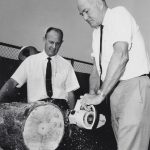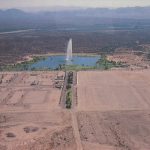1943
McCulloch Motors Corporation founded
In 1943, McCulloch co-founded McCulloch Motors Corporation, a company that manufactured chainsaws and other small-engine equipment. The company became successful and expanded its product line over the years. McCulloch Motors Corporation played a significant role in popularizing the use of chainsaws in various industries.
1960
McCulloch Oil Corporation of California Formed
In 1960 the Cuban American Oil Company name was changed to McCulloch Oil Corporation of California. The company was founded and guided through its early years by Robert McCulloch, an independent oil explorer. The method by which McCulloch built his company was to organize syndicates of investors annually to cover the costs of oil exploration. For a minimum investment of $10,000, participants in the program would receive all of the benefits from a productive exploratory well until their investments were repaid, and two-thirds interest in any further oil field development that took place as a result of the exploration. For organizing the syndicate and operating the program, McCulloch would retain the remaining one-third share. From 1956 to 1965, the company drilled 167 exploratory wells. 39 of these wells actually produced oil. 179 of the 247 development wells drilled during this period were producers, although none of these finds represented what could be called a major oil strike. In 1966, McCulloch Oil had gross revenues from oil and gas sales of approximately $2.7 million. About $24 million was raised that year through the outside investor program.
1965
C. V. Wood Jr. enters the picture
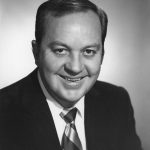 In the second half of the 1960s, under president C. V. Wood, Jr. McCulloch Oil’s biggest gains came in real estate rather than oil, where a major strike continued to elude the company.
In the second half of the 1960s, under president C. V. Wood, Jr. McCulloch Oil’s biggest gains came in real estate rather than oil, where a major strike continued to elude the company.
In the 1970s, Cornelius Vanderbilt Wood Jr. was involved in the development of Fountain Hills, Arizona, which included the construction of the famous Fountain Hills fountain. The fountain, which shoots water high into the air, has become one of the town’s prominent landmarks.
Wood is best known for his role in the development and creation of Disneyland, the iconic theme park in Anaheim, California. He was hired by Walt Disney in 1954 to oversee the planning and construction of Disneyland, which opened its doors to the public in 1955. Wood played a crucial role in managing the project and ensuring its successful completion. He was instrumental in coordinating various aspects of the park’s development, including infrastructure, attractions, and operations.
1965
McCulloch-Hancock Merge
1965 McCulloch-Hancock Oil & Gas Properties, Inc., was merged into McCulloch Oil Corp. of California. McCulloch-Hancock was created by members of a McCulloch exploration syndicate to operate oil and gas properties that had been completed. According to the terms of the deal McCulloch-Hancock shareholders received two-thirds of a share of McCulloch Oil common stock for each share of McCulloch-Hancock. The merger gave McCulloch Oil total possession of McCulloch Gas Transmission Co., the firm that operated a 100-mile natural gas pipeline system located in northeastern Wyoming.
1965
MCO unveiled Lake Havasu City
In 1965 the company unveiled Lake Havasu City, a planned community in Arizona. By the end of 1968, Lake Havasu had about 4,000 permanent residents, 140 businesses, a handful of industrial facilities, and a full range of public services. The city was also fully outfitted for major tourism, including hotels, golf courses, camp grounds, trailer parks, and a marina. During this period of rapid development, 50 salesmen were stationed at Lake Havasu City, and prospective buyers were flown in at no cost on the company’s six airplanes to see the property.
1967
Chaparral City is Planned
The descendants of settlers from the 1860s turned this area into one of Arizona’s most extensive land and cattle holdings until the late 1960s when Robert McCulloch Properties purchased it. A plan for constructing a dam near the Granite Reef would have led to the creation of a lake at Fort McDowell Indian Reservation. Robert P. McCulloch planned a community around the lake, which was intended to be called Chaparral City. However, the dam was never built as the residents of Fort McDowell opposed it. But work on the community had already begun, and Fountain Hills was formally established in December of 1970.
1968
McCulloch purchases the London Bridge
Lake Havasu received global attention in 1968 when McCulloch Oil purchased the London Bridge for $2.4 million and had it shipped in pieces to the development, where it was reassembled as a tourist attraction. By the end of 1968, McCulloch Oil’s sales had grown to $39 million, largely thanks to the expansion of its real estate endeavors. In fact, land sales accounted for around three-fourths of that year’s net income. The company was not idle in its other areas, however.
McCulloch gained widespread attention in 1968 when he purchased the London Bridge. The bridge, which dated back to the 19th century, was located in London, England. McCulloch saw an opportunity to attract tourists to a planned community he was developing in Arizona called Lake Havasu City. He bought the bridge for $2.46 million and had it disassembled and shipped to Lake Havasu City, where it was reassembled and became a popular tourist attraction.
1969
McCulloch Oil Strikes in Alaska
In 1969 McCulloch Oil drilled its first test well on the North Slope of Alaska, not far from Prudhoe Bay, where other companies had found gigantic oil reserves. The company also acquired several thousand acres of potential silver mining property in Colorado. In addition, operations at the Wyoming gas pipeline were expanded. Output from the pipeline in 1969 was about five times what it had been only three years earlier.
December 1970
Fountain Hills Est.
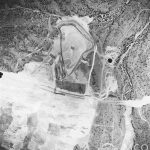 Fountain Hills is established by McCulloch Properties (now MCO Properties, Inc.). Prior to 1970 the area was a cattle ranch and was part of one of the largest land and cattle holdings in Arizona. The land was purchased by Robert McCulloch in the late 1960s and the community designed by Charles Wood, Jr. (designer of Disneyland in southern California).
Fountain Hills is established by McCulloch Properties (now MCO Properties, Inc.). Prior to 1970 the area was a cattle ranch and was part of one of the largest land and cattle holdings in Arizona. The land was purchased by Robert McCulloch in the late 1960s and the community designed by Charles Wood, Jr. (designer of Disneyland in southern California).
1971
McCulloch Properties Inc., begins development
1976
McCulloch Properties begins new town development
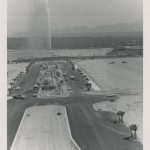 In 1976, Robert McCulloch, Sr. made the announcement that the company would be getting out of the land development business. They would not be starting any new ventures in new town development. He said they would be looking for another corporation that was already in the land business to acquire the McCulloch assets. In addition to Fountain Hills, McCulloch Properties had new city developments in Lake Havasu City, Ariz., and Pueblo West, Colo. They developed recreational home communities in Spring Creek, Nev., and Holiday Island, Ark.
In 1976, Robert McCulloch, Sr. made the announcement that the company would be getting out of the land development business. They would not be starting any new ventures in new town development. He said they would be looking for another corporation that was already in the land business to acquire the McCulloch assets. In addition to Fountain Hills, McCulloch Properties had new city developments in Lake Havasu City, Ariz., and Pueblo West, Colo. They developed recreational home communities in Spring Creek, Nev., and Holiday Island, Ark.
They also had three developments which they had purchased and were completing development within them. The developments were West Cliff Park in Amarillo, Tex., Silver Lakes, Calif., and Las Palmas, Puerto Rico.
Feb 25, 1977
Robert McCulloch, Sr. Dies
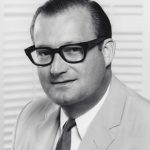 While McCulloch’s major business dealings were primarily focused on McCulloch Motors Corporation and the London Bridge, he had other investments and ventures throughout his career. However, there is no direct connection between Robert McCulloch Sr. and Fountain Hills, Arizona. Fountain Hills is a separate town located east of Scottsdale in Maricopa County, Arizona. It was developed by C. V. Wood Jr., a real estate developer, and his partners in the 1970s, several years after Robert McCulloch’s passing.
While McCulloch’s major business dealings were primarily focused on McCulloch Motors Corporation and the London Bridge, he had other investments and ventures throughout his career. However, there is no direct connection between Robert McCulloch Sr. and Fountain Hills, Arizona. Fountain Hills is a separate town located east of Scottsdale in Maricopa County, Arizona. It was developed by C. V. Wood Jr., a real estate developer, and his partners in the 1970s, several years after Robert McCulloch’s passing.
1978
Charles Hurwitz enters the picture
In 1978, a Texas businessman named Charles Hurwitz, entered the picture. His firm, Federated Development Company, later became MAXXAM, Inc. He became interested in McCulloch Oil’s heavy oil holdings, its cheap assets and interesting land holdings. He negotiated the acquisition and was successful in the purchase. With the purchase of McCulloch Oil, he found the parent corporation only had a 49 percent interest in McCulloch/Pratt Properties. After touring the properties and reviewing the books of the Pratt operation, Hurwitz decided he wanted total control of the properties’ subsidiary and questioned Pratt on his accounting practices. After a series of nose-to-nose negotiation sessions, Hurwitz worked out an agreement that returned Pratt’s 51 percent back to McCulloch Oil.
When word of the Hurwitz acquisition of Pratt Properties became public, there was a rumbling that went through the community. The community leaders liked Pratt. He lived in Fountain Hills and during his time of controlling the properties company, he donated the Community Center and a future Civic Center site to the Community Association.
July 1978
George Anderson name President of Pratt Properties
Hurwitz was labeled a corporate raider and there were many rumors circulated in the community that he was going to liquidate the property for the “fast buck.” Hurwitz hired the Victor Palmieri Co. for the interim management of Pratt Properties. The Palmieri firm was well-recognized for operating companies and assisting business and governmental institutions in the management of diversified asset holdings. They named George Anderson president of Pratt Properties in July 1978.
January 1, 1979
McCulloch Oil takes over
On January 1, 1979, McCulloch Oil (now a part of MAXXAM) regained full control of Pratt Properties. The name was immediately changed to MCO Properties and Anderson was retained as president.
Over the ensuing years, Hurwitz demonstrated that he was sincere in his interest to develop Fountain Hills.
“When I first toured the property, I thought Fountain Hills, with its magnificent rolling hills, was absolutely gorgeous and it had really good potential to develop into the special community that it has become,” Hurwitz said.
“We changed the entire sales program and did whatever it took to get the development going again. We improved the overall quality of the community. That was our goal and that’s what happened.”
December 5, 1989
Incorporated
Incorporation: Fountain Hills was officially incorporated as a town on December 5, 1989. This allowed for local governance and the establishment of town services, including law enforcement, infrastructure development, and community programs.
1990
Fountain Hills begins to boom
A new master plan was created that divided the community into “neighborhoods” with names such as SunRidge, North Heights, Crestview and FireRock. Along with those new neighborhoods came new interest in the community by quality custom-home builders. By the early 1990s, there was a housing boom going on and prices began to escalate. Fountain Hills became recognized as an “affluent suburb of Phoenix.”
But as more people moved to the new community, there was concern of some residents that maybe the growth was coming too fast and would eventually move up the hillsides of the McDowell Mountains.
The Town council, led by Mayor Sharon Morgan and Councilwoman Sharon Hutcheson, pursued the purchase of hillside properties from MCO for the McDowell Mountain Preserve. Following months of negotiation between Town and MCO officials, a compromise price was agreed upon.
Hurwitz later stated, “It probably turned out O.K. It’s the same old thing, a developer wanting to develop his property, especially those ridge tops that give you the greatest views. Look, we’re all environmentalists, but for some it is very emotional. They just don’t want houses on the mountains. I don’t see how building a house on a hilltop changes the environment.”
1992
NPOA: Fountain Hills
1992
Steve Vargo, SR. joins MCO Realty
June 2010
Fountain Hills Continues to grow
As of mid-2010, the economy was showing signs of turning around from its two-year downturn. Hurwitz said, “MCO is prepared for the turn-around.”
“Fountain Hills is in a magnificent location. It will come back. We’re looking forward to the challenge. Sometimes, you can’t push it any harder than what the market will bear. When it comes back, we’ll be ready,” he said.
May 2017
Steve Vargo, Sr. buys MCO Realty
 Steve Vargo has become president and owner of MCO Realty, which he recently purchased from MCO Properties, a subsidiary of Maxxam, the parent company in Houston.
Steve Vargo has become president and owner of MCO Realty, which he recently purchased from MCO Properties, a subsidiary of Maxxam, the parent company in Houston.
MCO Properties, the master developer of Fountain Hills, will continue to market Eagles Nest and Adero Canyon custom home site communities.
June 15, 2018
MCO Properties closes
According to a representative with MCO Realty, ‘some confusion has resulted following a recent report that MCO Properties has officially closed its doors’.
To clarify, the two entities are no longer affiliated and the closing of MCO Properties has had no impact whatsoever on MCO Realty, which continues to operate with business as usual.
July 27, 2023
MCO Realty under new ownership
 Michael Gant and Louis McCall acquire MCO Realty Real estate professionals Louis McCall and Michael Gant acquire MCO Realty, marking a new era for the Fountain Hills brokerage. McCall brings extensive market expertise and leadership in Arizona real estate, while Gant offers a strong background in marketing, executive management, and community engagement.
Michael Gant and Louis McCall acquire MCO Realty Real estate professionals Louis McCall and Michael Gant acquire MCO Realty, marking a new era for the Fountain Hills brokerage. McCall brings extensive market expertise and leadership in Arizona real estate, while Gant offers a strong background in marketing, executive management, and community engagement.
Together, they plan to focus on growth, acquisitions, agent development, and preserving MCO Realty’s strong local presence as a pillar in the Fountain Hills community.
